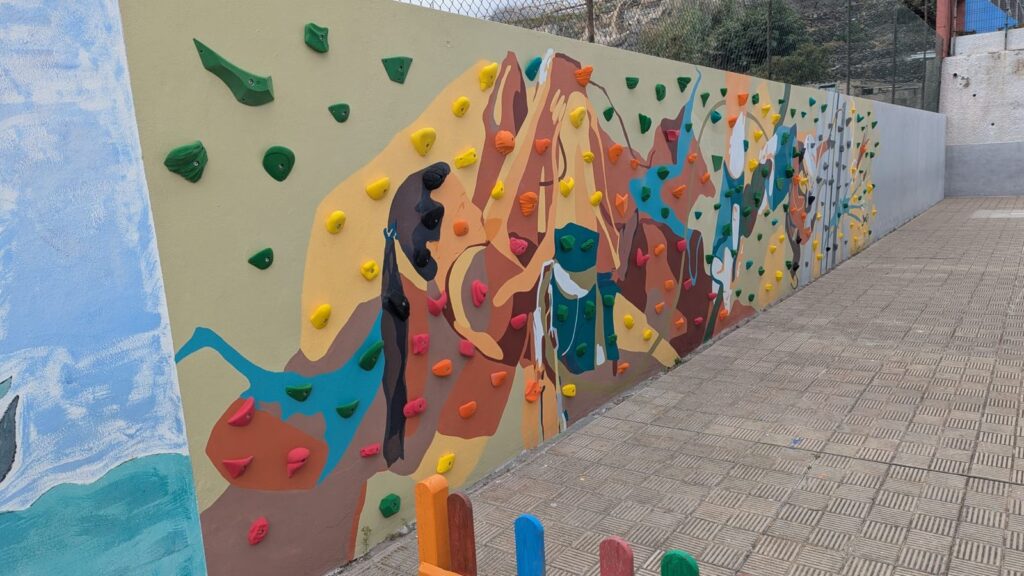
The Port of Santa Cruz de Tenerife achieved a remarkable feat on Sunday by successfully completing one of the most complex mooring maneuvers with the most resources in its history. This feat revolved around a colossal ship: the GTA FPSO, a 270-meter-long behemoth weighing 150,000 tons, three times the weight of the Titanic, and towering 31 meters high – as tall as an 8-story building.
The megaship had arrived on the island on the 10th but had been anchored outside Puerto Chicharrero until Sunday when the mooring on the East Dike was finally carried out.
The complexity of bringing this floating natural gas refinery into port warranted a trial and two attempts by the Ports of Tenerife. The first attempt was thwarted last Wednesday due to strong gusts of wind.
The enormity of the operation required extensive resources. In fact, the scale of the operation was unprecedented, with a staggering array of resources at play, according to the dockworkers of the Tenerife capital.
A supply ship and nine tugboats – four of which were high-powered – were utilized for anchoring and mooring maneuvers. Three of the tugboats were from Puerto Chicharrero –Tenerife, Canary Islands, and Balearics, while two had to be specially brought in from the ports of Santa Cruz de La Palma –Risban– and Lanzarote Reef –Mencey.
The high-powered tug Posh Osprey arrived in Tenerife on January 10 to accompany the megaship, while the other three high-powered tugs, Posh Falcon, Posh Teal, and Posh Eagle were employed for anchorage.
Four of the tugs used throughout the operation are of great power
In addition to these powerful vessels, 35 moorers were involved in tying the ropes to the bollards. As of 5:00 p.m. on Sunday, the extensive personnel deployed still had at least an hour left to complete the mooring of the GTA FPSO. The complexity of the process was such that a bulldozer had to be employed due to the weight of the ropes, resulting in the entire maneuver surpassing 14 hours since its commencement at 4:00 a.m. that Sunday.
Puertos de Tenerife President, Pedro Suárez, expressed his joy at the successful operation and commended the extensive team involved. He emphasized, “Without a doubt, it has been a great collective effort in which everyone from pilots to moorers, as well as tugboats, port Service Coordination Center personnel, technicians from the Santa Cruz de Tenerife Port Authority, and the ship’s consignees have participated.”
The large team deployed requires more than 14 hours, from four in the morning, to complete the operation
According to the president, “This achievement demonstrates the high professional level of the operatives in our port and signifies the first of the large-scale projects we hope to undertake on the island, either in the Santa Cruz or Granadilla facilities, to promote international ship repairs.”
Why did this maneuver pose such a challenge when this ship is similar in size to the numerous large cruise ships that arrive in Tenerife and necessitate only a fraction of the resources compared to this mooring? The GTA FPSO, bearing the Panamanian flag, lacks its own propulsion and keel, imposing immense limitations on its navigation, hence the need for numerous tugboats.
Anchored outside the port of Santa Cruz since the 10th, the ship, a floating natural gas refinery, is scheduled to undergo three to four months of overhaul before its departure to the coast of West Africa for a commercial mission.
The GTA FPSO arrived with 144 crew on board and 500 professionals, and this immense maritime operation has set a new standard for mooring maneuvers. Successful execution further underscores the capability and expertise of Puertos de Tenerife in handling such colossal projects. Such accomplishments not only solidify their professional stature in the maritime industry but also pave the way for future ambitious endeavors on the island’s ports.The GTA FPSO Arrives in Tenerife with New Reparation Contract
The GTA FPSO has arrived at the port of Santa Cruz de Tenerife with 144 crew members on board and 500 professionals. They will be accommodated in a prominent hotel chain in the city until the ship’s fine-tuning is completed at the Tenerife Shipyards company’s facilities. Pedro Suárez remarked, “Without a doubt, these are figures that will have an impact on all areas of the city in particular and the Island in general.”
The reparation work will not be limited to the ship alone; nearly a hundred technicians associated with Tenerife Shipyards will be working on the setup at the shipyard in the port of Tenerife.
The ship will remain in the docking line of its concession in the Eastern Dock, where a base of operations has been set up. To ensure the security requirements for both the ship and the professionals spending the next few months there, bollards with a capacity of more than 150 tons of pull, certified and tested, have been installed.
In addition, floating defenses, measuring 12 meters in length, have been manufactured and installed for the first time in the Canary Islands to facilitate the docking of the ship. These floating devices serve to reduce movement that could affect the ship.
Consigned in Tenerife by Wilhelmsen Port Services, the ship arrived from the port of Dakar, the capital of Senegal, accompanied by the Norwegian supply ship Bergen.














